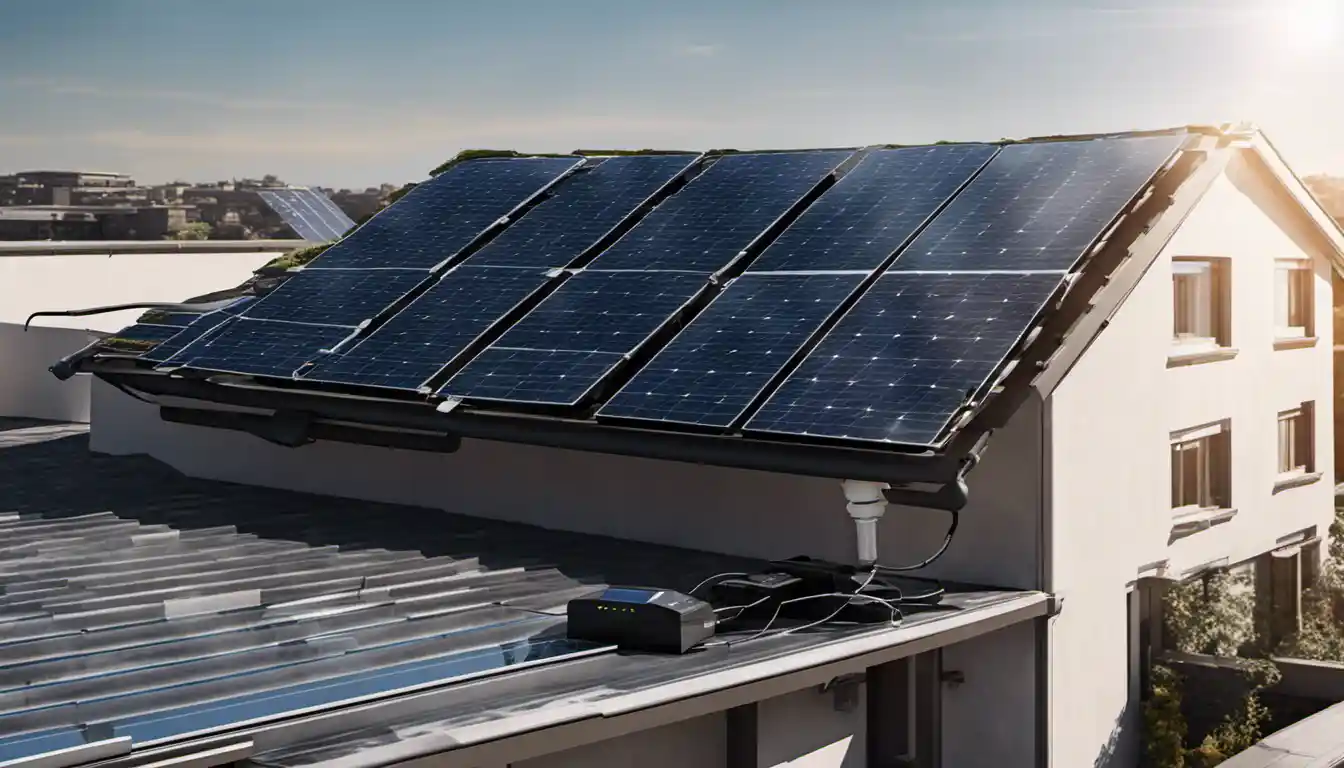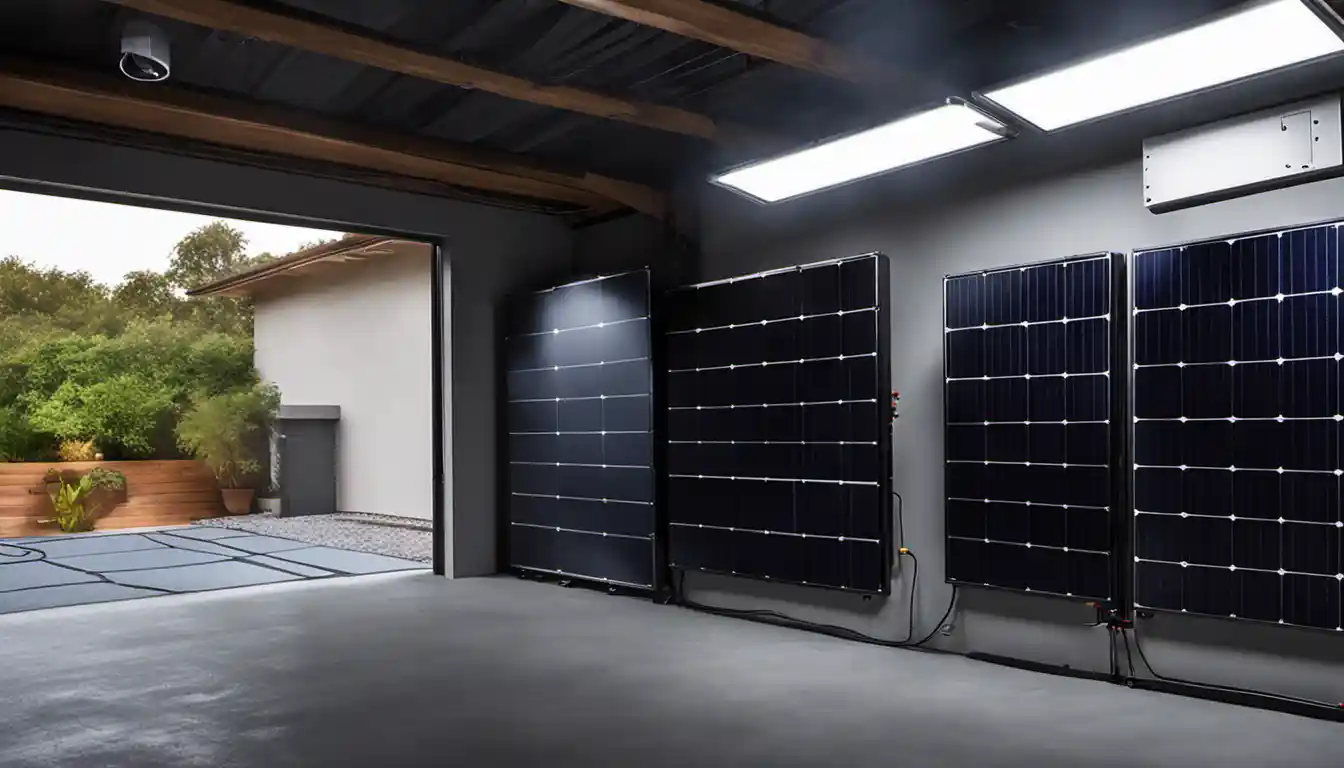Understanding Solar Batteries
A DIY battery for solar involves creating a solar power storage system for energy generated from solar panels. This often includes components like batteries, a battery box, a charge controller, and an inverter. One popular option DIY enthusiasts use is the deep-cycle lead-acid battery due to its cost-effectiveness and efficiency.
What is a Solar Battery?
Quite simply, a solar battery stores collected energy generated from solar panels during the day, ready for use when the sun goes down. It’s the heart of your off-grid system, holding the power until you need it, and making off-the-grid living a practical reality. Understanding how a solar battery works will provide greater clarity as we move on.
Why You Should Consider Using a Solar Battery?
A DIY solar battery is a great project for those who want to tap into sustainable, affordable energy. It not only significantly reduces your power bills, but it also provides a reliable backup source of power during blackouts. Furthermore, it’s an excellent way to reduce carbon emissions – so you’re playing your part in saving our precious environment!
Different Types of Solar Batteries
There are three main types of solar batteries: lead-acid, lithium-ion, and saltwater. Each type has its pros and cons, but for this guide, we’ll focus on creating a lead-acid battery due to its availability and simplicity for a DIY project.
DIY Solar Battery Creation at Home
Are you ready to roll up your sleeves and learn how to make a solar battery at home? Fantastic! Here’s how we do it:
Materials Needed

To create your DIY battery for solar, you’ll need:
- A deep-cycle lead-acid battery
- Solar panels
- Charge controller
- Inverter
- Battery box
- Cables and connectors
Safety Guidelines
First things first, safety! When handling the battery, ensure you’re wearing insulative gloves and protective eyewear. Batteries contain harmful chemicals, which can be dangerous if mishandled. Maintain a well-ventilated work area, and keep batteries away from fire and intense heat.
Detailed Step-by-step Process
Battery Casing
Start with a sturdy battery casing to protect the battery and wiring. It can be a commercially available battery box or a DIY casing made from non-conductive materials like plastic or wood.
Electrolyte Preparation
Fill the battery with a mixture of acid and distilled water, also known as an electrolyte. Follow the manufacturer’s instructions for the correct ratios.
Solar Cell Installation
Install solar cells onto your solar panels. These cells will harness the sun’s power and convert it into electricity. Be sure to choose cells with the right wattage for your battery.
Battery Connection

Connect the solar panels to the charge controller using appropriate cables and connectors. The charge controller prevents the battery from overcharging by controlling the voltage and current coming from the solar panels.
Final Assembly and Testing
Connect the battery to the charge controller, then connect the charge controller to the inverter. Give your system a test run to see if everything’s working correctly. If all is well, congrats! You’ve just created your DIY battery for solar.
Energy Storage Solutions
Taking control of your power supply doesn’t end with creating a battery. You’ll need to optimize your setup for efficiency and longevity.
Understanding Battery Management Systems (BMS)
A BMS is critical for safe battery operation. It monitors key operational parameters during charging and discharging and ensures your battery is working within safe limits, prolonging its lifespan.
Exploring Various Battery Types for Your Solar Panel System
Several battery options exist when looking at how to make a solar battery at home. Deep-cycle lead-acid batteries are popular for their affordability and wide availability. However, you’ll find other types of batteries like Lithium-ion, LiFePO4, and second-life lithium batteries, which also offer excellent storage capabilities.
Solar Battery Backup – What You Need and Mistakes to Avoid

Building solar battery storage is not just about connecting different components. It’s crucial to understand the full process and anticipate potential issues.
Benefits of Adding a Solar Battery Backup to Your Solar Power System
Adding a solar battery backup to your set-up means you’ll have a power supply even when your grid connection is down. It also allows you to use solar power during peak usage times in the evening when electricity tends to be expensive.
Necessary Components for a Solar Power System with a Battery Backup
Your solar power system includes the solar panel, charge controller, inverter, and the battery. Each component plays a significant role in ensuring you have a continuous supply of power.
How to Build a DIY Solar Battery Storage
Refer back to the detailed process highlighted in this guide for creating a DIY solar battery storage system.
Common Mistakes to Avoid
Look out for common pitfalls like choosing the wrong battery type, inadequate system sizing, or poor installation. Remember, safety should always be your top priority.
Wrapping Up
Building your DIY battery for solar can seem daunting at first, but with careful planning, it’s an achievable project. A DIY solar battery offers numerous benefits, from cost-saving to contributing to a greener environment. Armed with the guide above, I hope you’re better equipped to tackle this project. Good luck!



